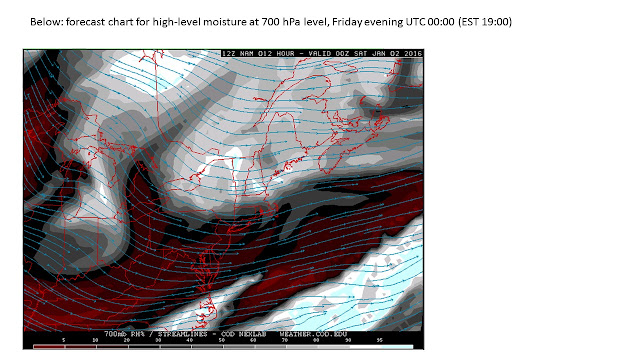Will skies be clear over southern Ontario Friday night?
It looks like skies will most likely be clear during the
early evening over most regions, followed by increasing cloudiness by midnight.
During early evening, a weak high pressure ridge over
southern Ontario will be contributing dry air and diminishing winds, until
high-level moisture moves eastward over southern Ontario (illustrated below for
early evening) ahead of Saturday’s low pressure trough. Mostly clear skies are
likely, except for regions southeast of Lake Huron and Georgian Bay, where
lake-effect cloudiness may cause cloudy skies during early evening.
More substantial mid-level moisture that is forecast to move
eastward (illustrated below for the hour after midnight) is likely to cause
cloudiness over southwestern regions by late evening and all regions by or
after midnight.










